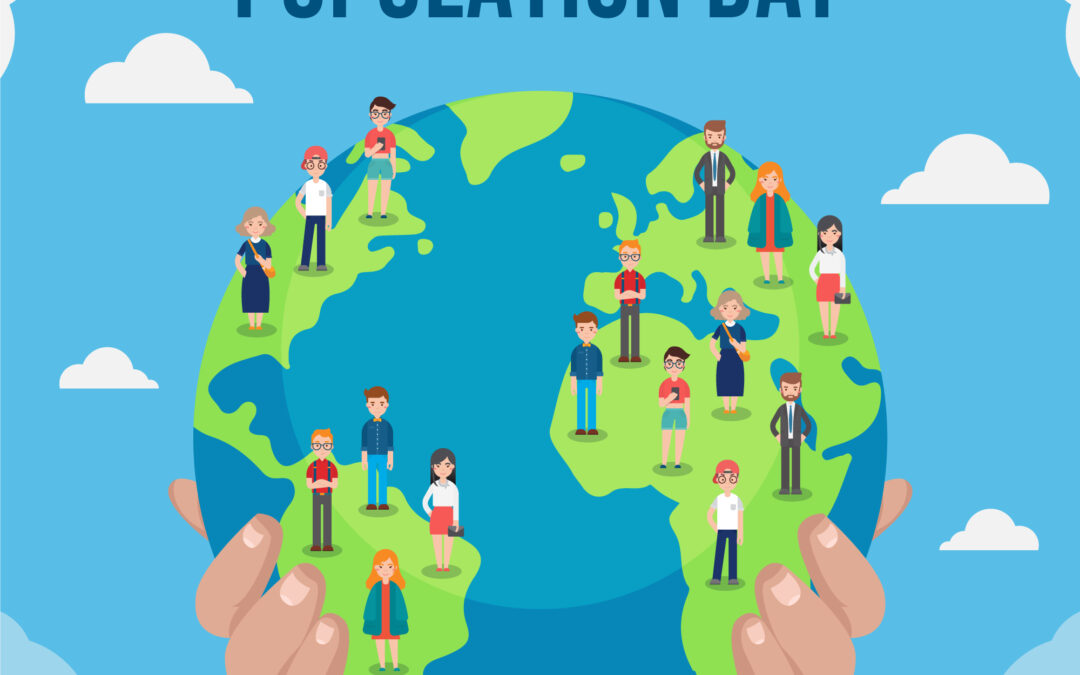On July 11, 2025, the world pauses to reflect on something that connects every one of us — population. Not just the statistics or charts, but the stories behind them. World Population Day is more than an observance; it’s a conversation about who we are, how we live, and what kind of future we’re building together.
India Becomes the World’s Most Populous Nation World Population Day
India With a population of over 1.45 billion, it has formally emerged as the most populous nation in 2025. India’s rapid population growth highlights its importance in global economics and development. While India faces challenges like resource shortage and unemployment, it also holds great potential with a young and dynamic population. To ensure a better future, India must focus on sustainable growth, quality education, and accessible healthcare. With the right policies and planning, India can turn its demographic strength into a major advantage on the world stage.
Understanding the Impact of Overpopulation
Concern over overpopulation is becoming more widespread, particularly in emerging nations. When the number of people exceeds the carrying capacity of a region, overpopulation leads to issues like scarcity of food, water, housing, and jobs. It puts immense pressure on healthcare and education systems. Degradation of the environment and pollution are also caused by overpopulation.. To address overpopulation, we must promote awareness, family planning, and sustainable resource use. Without action, overpopulation could threaten the quality of life for future generations.
Why Population Control Is Essential for India’s Future
Population control is a crucial step toward sustainable development, especially in a country like India, where the population exceeds 1.45 billion. Without effective population control, pressure on natural resources, jobs, housing, and healthcare continues to grow. India must invest in education, public awareness, and accessible family planning methods. Through population control, India can reduce poverty, improve quality of life, and ensure a better future for coming generations. Strong policies and public support are key to achieving meaningful population control in India.
🔹 Why We Talk About Population
When we hear about the world’s population — now crossing 8.1 billion — it can feel overwhelming.However, each number has a person, a family, and a community behind it. A baby born in a village hospital in India. A girl in Nigeria waiting for her chance to go to school. A young man in Brazil hoping to find stable work.
Population growth is not a crisis — it’s a sign of progress. We’re living longer. Fewer children are dying in infancy. More people are getting access to healthcare and education than ever before. But with that progress come new challenges. How do we share limited resources in a fair way? How do we protect the environment while providing for billions of people?
🔹 The 2025 Theme: “Empowering People, Sustaining the Future”
This year’s theme focuses on two key ideas: empowerment and sustainability. The future doesn’t depend on how many people there are, but on how those people live, work, and care for one another.
Empowerment begins with education. Especially for girls and women. When women are educated and have access to reproductive healthcare, they make informed choices. Communities become healthier. Economies grow. Cycles of poverty are broken.
Sustainability means making choices today that won’t harm generations tomorrow. It means building cities that are green and inclusive, ensuring food systems that can feed more people without destroying nature, and using technology responsibly to solve human problems.
🔹 What World Population Day Reminds Us
Fundamentally, World Population Day 2025 serves as a reminder of our collective duty.
- 🌱 To treat the planet not as a resource to be used up, but as a home to be cared for
- 📚 To guarantee that every kid has the right to an education, irrespective of their gender or location
- 🤝 To create a society where everyone can live with dignity, safety, and opportunity
- 🧠 To invest in data, science, and community-driven solutions that respect both people and ecosystems
It is also a reminder that progress is possible — but only when we recognize the human side of the numbers.
🔹 What Can You Do?
You don’t need to be a policymaker or a scientist to make a difference. Here are several ways that you can participate:
✅ Talk about population issues in your circle — online or offline
✅ Support organizations working on health, education, and sustainability
✅ Share stories, not just stats. Humanize the headlines.
✅ Volunteer your skills for social good — design, writing, data, organizing
✅ Choose eco-conscious and inclusive practices in your daily life
🔹 Why This Matters to All of Us
We often think about population in terms of pressure: more people = more problems. But that’s not the whole story. The real issue is how equitably we distribute opportunity and responsibility. A future where 10 billion people can live well — not just survive — is possible. But only if we design that future with intention, compassion, and purpose.
FAQ
Question: What is the theme of the world population day 2025?
Answer: The theme for World Population Day 2025 is “Empowering young people to create the families they want in a fair and hopeful world”. This theme emphasizes the rights and choices of young people, particularly regarding their reproductive health and future, in the context of global challenges like economic uncertainty, gender inequality, and the climate crisis.
Question: Why is July 11 celebrated as Population Day?
Answer: It was inspired by the public interest in Five Billion Day on July 11, 1987, the approximate date on which the world’s population reached five billion people.
Question: What is one slogan on World Population Day?
Answer: Be proud and control the crowd. Happy World Population Day. Two children, bright future; More children, no future.

